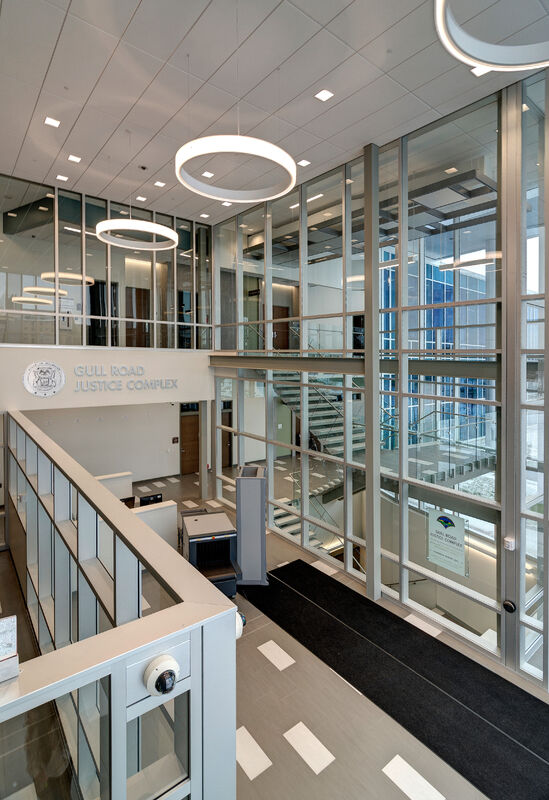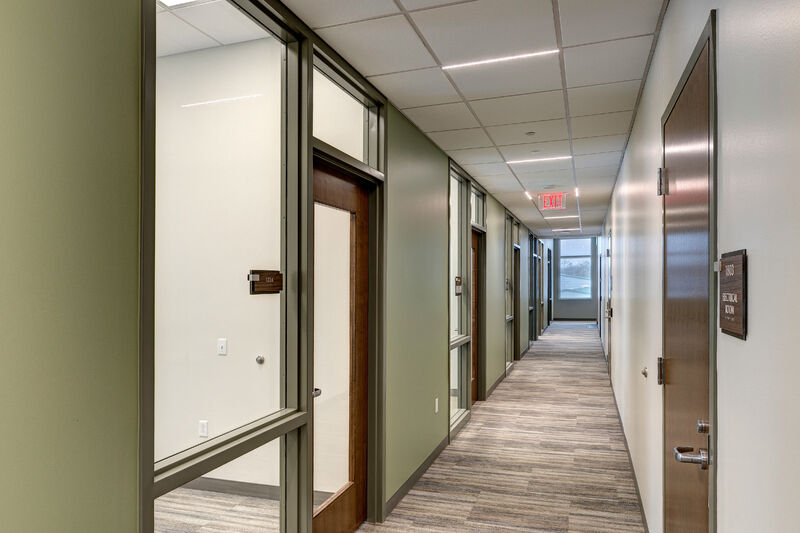 In Part 3, we detailed material composition, sustainability considerations and finish options. In our final segment of this blog series, we’ll conclude with an overview of interior framing systems’ components, installation and warranty considerations.
In Part 3, we detailed material composition, sustainability considerations and finish options. In our final segment of this blog series, we’ll conclude with an overview of interior framing systems’ components, installation and warranty considerations.
Components and Installation
Most manufacturers of interior aluminum framing provide systems with a 2-inch face and a choice of 4-1/2 or 5-1/2 inch depths. The system anchors at the glass pocket, which accommodates standard glass thicknesses. This can be modified to hold glazing and other panel inserts with thicknesses ranging from 1/4 to 3/4 inch.
The finished aluminum framing is shipped to the installing contractor in “stick” lengths and fabricated with screw spline construction. This allows the material to be ordered prior to having the exact opening dimensions, and adjusted as needed at the jobsite.
Gaskets position and secure the glass, glazing or other insert panel between the aluminum framing members. Bulb gaskets at the interior/exterior joint with drywall provide a uniform appearance and do not require sealant.
Typically, the interior aluminum framing systems are installed after drywall, completely covering the end of the stud wall. Specialized adapters allow frames to be installed before drywalling, where necessary.
Perimeter trim adapters also provide a breadth of design configurations. Speeding installation, some manufacturers pre-apply trim to one side of the frame to assist in positioning the system in the opening. Options also are available for knee wall conditions, and for channel head and sill components. Swing doors can be integrated within the framing system, and do not include thresholds as part of their standard package.
Quality Assurance and Warranties
To ensure consistency in quality, warranty, finish and product compatibility, specify a single manufacturer as the basis of design. Providing the project’s criteria is met, a single-source manufacturer also can be specified for both interior and exterior aluminum framing system applications.
For added quality assurance, include language specifying that the manufacturer and the installer should have a certain number of years of documented experience. This number may vary depending on the project’s complexity. For example, five to 10 years may be suitable for a Class A office build-out, where at least 20 years of experience may be preferred for a highly secured government center.
 Warranty terms also should reflect the project’s intended use and longevity. Two years is typical for standard tenant improvement projects where changes are frequent. Ten years may be requested for low-turnover facilities, such as owner-occupied spaces or government centers.
Warranty terms also should reflect the project’s intended use and longevity. Two years is typical for standard tenant improvement projects where changes are frequent. Ten years may be requested for low-turnover facilities, such as owner-occupied spaces or government centers.
The warranty language generally states that the manufacturer agrees to repair or replace defective aluminum framing components. In addition to this, a separate warranty covers the factory-applied finish on the extruded aluminum framing.
For high-performance coatings that meet AAMA 2605, 10 years with an option of up to 20 years can be expected, and many provide dependable performance for up to 40 years or more. Further supporting sustainable design goals, the aluminum framing members can be locally recycled at the end of its long life in the building.
Remember to involve the framing system manufacturer and installing contractor early in the project’s development. They can assist with product specifications and selection criteria for optimal performance, sustainability and longevity on your project.
